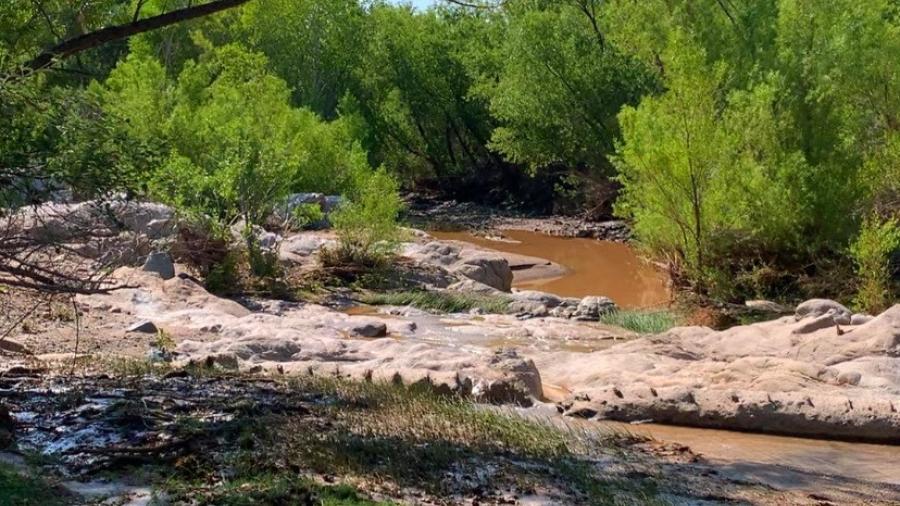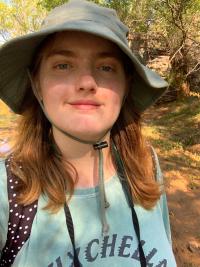Alumni highlight: Sierra Planck, class of 2023

Photo from Planck's internship with the Sonoran Audubon Society, focusing on the endangered yellow-billed cuckoo.
When most high school students consider their futures, the path to college often seems a straightforward journey. However, for those like Sierra Planck, who spent a significant portion of their youth in the foster care system, the road to higher education can be filled with uncertainty and unique challenges. Through the Arizona foster care system and help from Arizona State University, Planck is pursuing her passion for wildlife and conservation.
Having been in foster care for a long period of her youth, financial concerns and the complexities of navigating higher education as a foster youth were daunting. "I wasn't even sure that I would be able to attend university at that point in my life," Planck says. "I thought maybe I could afford going to community college and then transfer to ASU afterward."
Arizona's Department of Child Safety (DCS) collaborates with various organizations to provide educational assistance. This support extended beyond covering exam fees and help with college expenses, it also covered prom and extracurricular costs in high school. Contrary to common misconceptions, foster youth do not automatically receive free tuition at state schools; eligibility and application for scholarships are necessary steps. Among the notable scholarships Planck received were the Obama Scholarship and the Nina Scholars Legacy Program, founded by conservationist Nina Mason Pulliam to aid disadvantaged youth and adults.

Upon turning 18, foster youth in Arizona can choose to exit the system or stay voluntarily until 21, receiving a gradually decreasing living stipend. For Planck, remaining in the system was a strategic choice, allowing her to focus on her education and ambitions. Determined to excel, she pursued a scholastic diploma, which included taking specialized classes, participating in a veterinary assistant program near ASU Polytech. Despite an initial interest in veterinary medicine, she soon realized her true calling lay elsewhere.
"I used the Kuder Career Navigator to explore various career options," she explains. "Eventually, I found my passion in conservation biology and ecology." This decision was bolstered by the practical experiences they sought out, including interviewing professionals in wildlife organizations and volunteering at a local animal shelter and the Phoenix Zoo.
Thriving at ASU: Clubs, research and community
Planck received her degree from the School of Life Sciences in conservation biology and ecology with a minor in sustainability.
Her time at ASU was marked by active involvement in various clubs and organizations. She was a member of the ASU Gardening Club, the Ocean Conservation Club, and the Nature at ASU Club, among others. These extracurricular activities provided a sense of community and opportunities to connect with like-minded peers and professionals.
In her freshman year, she participated in undergraduate research with Corina Logan, studying the behavior of the great-tailed grackle and how it adapts to urban environments. This experience, alongside the challenges posed by the COVID-19 pandemic, further solidified Planck’s commitment to fieldwork over laboratory settings.
"I started joining clubs relevant to my interests and hassling my advisors every semester to ensure I could complete my major, minor, and two certificates within four years," she recalls. The online format of many classes during the pandemic allowed them to manage an intense course load, sometimes taking up to 24 credit hours per semester.
"Flexibility has been key," she reflects. "I never wanted to have a rigid game plan because that can set you up for failure. By pursuing multiple qualifications and gaining hands-on experience, I've opened more doors for my future."
Making a difference through volunteer work
Volunteer work has played a crucial role in shaping Planck’s career trajectory. One notable project was the black-footed ferret spotlighting program with Arizona Game and Fish, which was introduced to her by the Central Arizona Chapter for the Society of Conservation Biology, where she participated in overnight shifts to locate and vaccinate these endangered animals. This experience led to a fortuitous introduction to Emily Thomas, president of the Maricopa Audubon Society. Thomas recognized Planck’s potential and recommended them for a summer internship with the Sonoran Audubon Society, focusing on the endangered yellow-billed cuckoo.
"The internship was from June to September, tracking population data for the yellow-billed cuckoo," she explains. "Upon completion this summer, I became certified to work with this endangered species." This certification, combined with her extensive volunteer work and an internship that spanned two summers paved the way for further opportunities.
Today, Planck is a board member for the Maricopa Audubon Society, holding the position of Publicity Coordinator. In this role, she manages the organization's Facebook page and participates in various outreach events, advocating for wildlife conservation and engaging the community.
Her dedication extends beyond personal achievements. She actively mentors other students, sharing their wealth of knowledge and resources. "I want to help pave the way and make the process less intimidating for others," she emphasizes. Helping others is another passion of hers, one that she gets to pursue alongside her love for conservation. Her efforts include creating a comprehensive resource guide for students interested in conservation biology, encompassing volunteer opportunities, resume-building tips and advice for navigating the field.